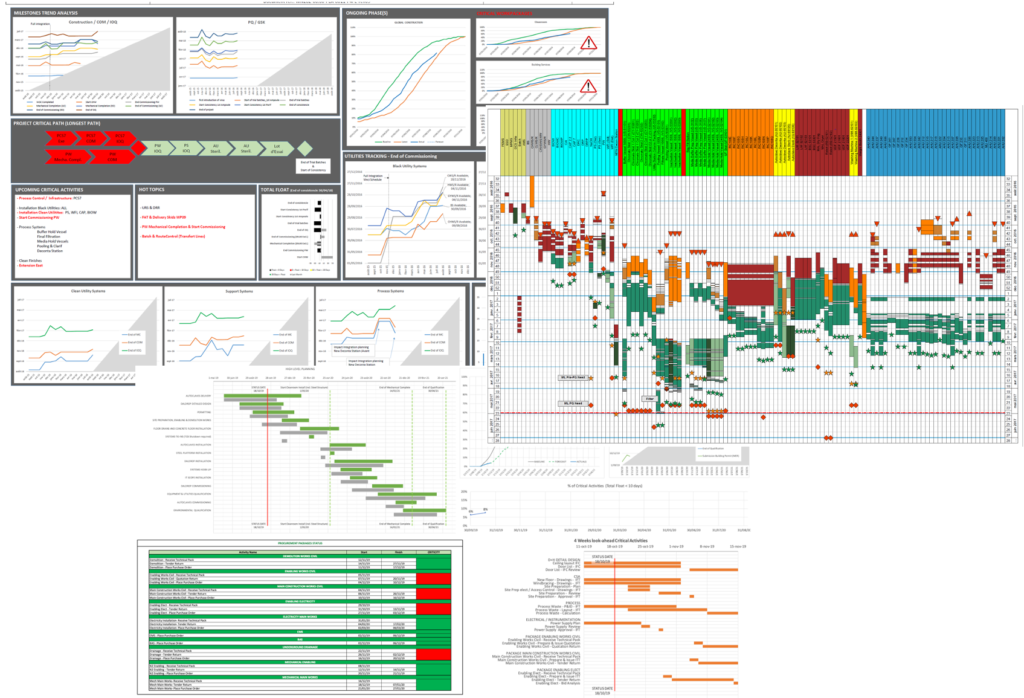Establishing an effective and appropriate framework for project governance is crucial to the success of any project, particularly projects on a large scale. Having a framework in place helps in streamlining decision-making throughout the project life cycle. As the first step in implementation, it is imperative to identify the core components of such a framework and determine suitable strategies to adopt. This article delves into each stage comprehensively, from outlining objectives to establishing decision-making processes, providing insights to enhance your project management practices.
The key components of an effective project governance framework
Setting up a precise protocol will give you both an overview and control over the entire project. So, generally speaking, you need to start by identifying and defining these four key stages.
1. Stakeholder identification
The first step is to recognise and list all the individuals and organisations who will be impacted by or have influence over the project. It is essential to gather and document their expertise, requirements, expectations and limitations and incorporate them into the governance of the project.
2. Definition of roles and responsibilities
3. Setting up a decision-making process
Project governance is highly dependent on having a defined and transparent decision-making process in place. This decision-making process must involve a steering committee comprised of individuals responsible for making strategic decisions and ensuring their implementation. It must also establish criteria for decision-making, determine the level of everyone’s involvement and describe the stages involved in approving and communicating decisions. Creating mechanisms for resolving any decision conflicts between stakeholders is also vital.
4. Communication and regular monitoring
The best strategies for creating an effective project governance framework
Once the key components have been identified and established, additional strategies can be used to help build the governance framework. These include:
Alignment with organisational strategy
The project’s objectives must be integrated into the organisation’s overall vision and must be consistent with the company’s mission and values. Objectives must be clear, realistic and measurable from the outset.
Using performance indicators (KPIs)
Key performance indicators (KPIs) are used to measure the results achieved against the objectives set, to monitor the progress of the project and to identify any problems or deviations that need to be corrected. They provide a clear view of the project’s progress and allow you to make informed decisions about continuous improvement.

Regular training for the project governance team
All team members must possess the skills they need to carry out their allotted tasks. Consequently, providing ongoing training and opportunities for skills development is extremely important. Training employees enhances their expertise, allows them to acquire new knowledge and keeps them up to date with best practices in project management.
The benefits of a project governance framework
Develop an effective project governance framework with a structured and rigorous approach, and you will quickly reap the benefits:
- Better communication and information flow between stakeholders
- Clearly defined objectives that are relevant to all those involved in the project
- Informed decision-making
- Reduced lead times and costs through the logical allocation of responsibilities and identification of decision-makers
- Generally speaking, good structuring makes it much easier to achieve objectives
Conclusions
By examining and discussing the various aspects, we have been able to highlight the steps and processes required to establish an optimal project governance framework.
Throughout this process, we have emphasised the significance of communication, defined responsibilities and regular performance evaluation in ensuring your governance framework’s effectiveness.
Essential components include defining objectives, identifying stakeholders, clarifying roles and responsibilities, establishing a decision-making process and communicating regularly. By implementing these key elements and embracing effective strategies, you can establish a project governance framework that facilitates decision making and helps you achieve your project’s defined objectives more easily.
Additional reading about project governance
Choosing PROPRISM to ensure controls of your projects
PROPRISM deploys its expertise in Project Controls to offer you solutions tailored to the management and control of your projects. We have a team of experts capable of improving the quality of your projects, promoting productivity and strategic alignment, as well as reducing costs and ensuring deadlines. PROPRISM operates in the pharmaceutical, marine, construction, engineering, transport and infrastructure, and chemical industries.
Our experts play a key role in the success of your projects. Their experience is employed to ensure that resources are properly allocated and that budget forecasts are adhered to. Using agile methods and project management tools that encourage adaptability and responsiveness to change, they encourage improvement and productivity in project management. PROPRISM also plays an essential role in providing advice and assistance, and supports your teams throughout the project life cycle with ongoing training. We also ensure coordination and motivation throughout the project to guarantee its success. Thanks to our solid expertise and essential teamwork, we can work with you to make your projects successful.




